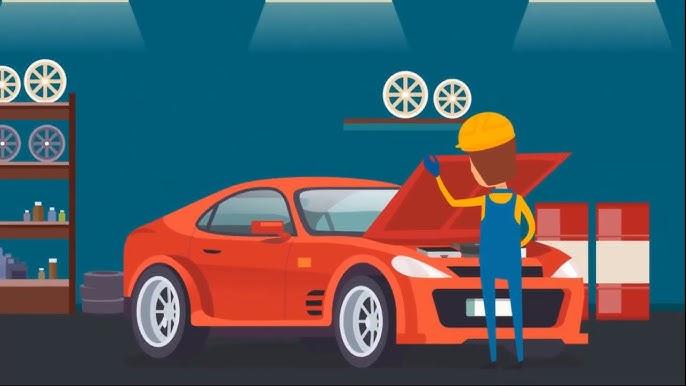Honda Pilot Service: Keeping Your Family SUV in Excellent Condition

The Honda Pilot is a well-rounded, reliable family SUV known for its spacious interior, smooth ride, and impressive safety features. Whether you're navigating city streets, embarking on road trips, or simply commuting to work, the Honda Pilot delivers a comfortable driving experience. To keep it running at its best, regular service and maintenance are essential. In this blog, we’ll cover key service tasks, common problems, and tips for maintaining your Honda Pilot for years of dependable performance.
Why Regular Service is Important for Your Honda Pilot
Owning a Honda Pilot comes with the responsibility of keeping it in excellent condition. Regular servicing not only ensures your car runs smoothly but also enhances its longevity and reliability. Here are a few reasons why service is crucial:
- Performance: Regular servicing helps maintain optimal engine performance, smooth handling, and fuel efficiency. Ignoring necessary maintenance could result in poor performance, affecting acceleration, power, and fuel economy.
- Safety: Safety should always be a priority. Regular checks of your brakes, tires, suspension, and other critical systems ensure that your Pilot remains safe on the road for you and your passengers.
- Longevity: Keeping up with the recommended maintenance schedule can extend the life of your vehicle. Well-maintained cars tend to experience fewer breakdowns and retain higher resale value.
- Warranty Coverage: Regular servicing helps ensure your vehicle remains under warranty, particularly if the service is performed by a certified technician using OEM parts.
Key Service Tasks for Your Honda Pilot
To keep your Honda Pilot performing at its best, you’ll need to stay on top of a variety of essential service tasks. Here are some of the most important maintenance services to be aware of:
1. Oil and Filter Change
- Why it’s important: Engine oil lubricates the internal components of your engine, reducing friction and preventing overheating. Over time, oil can become contaminated with dirt and debris, losing its effectiveness.
- Recommended frequency: Typically every 7,500 to 10,000 kilometers, depending on the type of oil used (synthetic or conventional) and driving conditions.
2. Brake System Inspection
- Why it’s important: The brake system is a critical safety feature. Regular brake inspections can help you identify worn-out pads, damaged rotors, or leaking brake fluid, all of which could compromise your ability to stop safely.
- Recommended frequency: Inspect your brakes every 20,000 kilometers or when you notice issues such as squealing or reduced braking power.
3. Tire Maintenance
- Why it’s important: Tires are the only point of contact between your vehicle and the road. Ensuring proper tire pressure and alignment helps optimize fuel efficiency, handling, and safety.
- Recommended frequency: Check tire pressure monthly and rotate tires every 10,000 to 15,000 kilometers. Align and balance tires as needed, particularly if you notice pulling or uneven tire wear.
4. Fluid Levels Check
- Why it’s important: Fluid levels (engine oil, coolant, transmission fluid, brake fluid, and power steering fluid) are critical for smooth vehicle operation. Low or dirty fluids can lead to overheating, poor performance, and mechanical issues.
- Recommended frequency: Check fluid levels at every oil change and top up fluids as needed.
5. Air Filter Replacement
- Why it’s important: The air filter prevents dirt, debris, and contaminants from entering the engine, ensuring that the engine receives a clean air-to-fuel ratio. A clogged air filter can reduce engine performance and fuel efficiency.
- Recommended frequency: Replace the air filter every 30,000 kilometers or more frequently if you drive in dusty conditions.
6. Transmission Fluid Service
- Why it’s important: Transmission fluid lubricates the components of the transmission, ensuring smooth gear shifts and preventing wear. Regular transmission fluid changes can prevent transmission problems and costly repairs.
- Recommended frequency: Every 60,000 to 100,000 kilometers, depending on your driving conditions and whether you drive in heavy traffic or extreme temperatures.
7. Timing Belt Replacement
- Why it’s important: The timing belt ensures that the engine’s valves and pistons work in harmony. If the timing belt breaks, it can cause significant engine damage.
- Recommended frequency: Replace the timing belt every 100,000 to 150,000 kilometers, depending on your specific model and year of the Honda Pilot.
8. Suspension System Inspection
- Why it’s important: The suspension system absorbs shocks and helps maintain vehicle stability. Worn-out components can cause a rough ride, poor handling, and increased tire wear.
- Recommended frequency: Inspect the suspension system every 30,000 kilometers or if you notice signs of uneven tire wear, unusual noise, or decreased ride comfort.
Common Problems in the Honda Pilot
While the Honda Pilot is known for its reliability, certain issues can arise as the vehicle ages. Here are some common problems that owners might experience:
1. Transmission Issues
- Some older Honda Pilot models (especially 2003-2005) are known to have transmission issues, such as delayed shifting or slipping gears. The issue is often related to the automatic transmission’s torque converter or internal components.
- Solution: Regular maintenance, such as fluid changes, can help prevent this issue. If you notice rough shifting or the transmission warning light comes on, consult a mechanic for an inspection.
2. Power Steering Problems
- Power steering issues, including whining noises or difficulty steering, are not uncommon in older Honda Pilots. This could be due to a leak in the power steering fluid system or a failing power steering pump.
- Solution: If you notice issues with steering, check the power steering fluid levels first. If the fluid is low or leaking, it’s essential to have the system repaired.
3. Air Conditioning Problems
- Some Honda Pilot owners report air conditioning issues, such as weak airflow or the A/C not cooling effectively. This is often due to a refrigerant leak or a faulty compressor.
- Solution: If your A/C isn’t cooling properly, have the system inspected. It may require a refrigerant recharge or replacement of components like the compressor or condenser.
4. Oil Leaks
- Over time, seals and gaskets can deteriorate, leading to oil leaks. If you notice oil spots on the ground under your vehicle or the oil light comes on, it could be a sign of an oil leak.
- Solution: Inspect the oil pan, valve cover, and other engine seals for leaks. Replacing the damaged seals or gaskets should resolve the issue.
5. Electrical Issues
- Some Honda Pilot owners report problems with the vehicle’s electrical system, including issues with the battery, alternator, or wiring. Symptoms may include dimming lights, difficulty starting the car, or problems with power accessories like windows or door locks.
- Solution: Regularly inspect the battery and charging system. If you experience electrical issues, have the alternator and battery tested.
How to Maintain Your Honda Pilot
To keep your Honda Pilot in great condition, follow these simple maintenance tips:
- Follow the Recommended Maintenance Schedule: Stick to the service intervals suggested by Honda. Regular servicing is the key to preventing major issues.
- Use Quality Parts: Always use OEM (Original Equipment Manufacturer) parts and fluids for repairs and replacements to maintain your vehicle’s performance and longevity.
- Drive Responsibly: Smooth driving can help reduce wear and tear on your vehicle. Avoid heavy braking, hard acceleration, and sudden turns whenever possible.
- Keep an Eye on Warning Lights: Don’t ignore the dashboard warning lights. Address issues as soon as they arise to avoid more costly repairs.
Where to Get Your Honda Pilot Serviced
When it comes to servicing your Honda Pilot, it’s crucial to find a service provider who understands the specific needs of your vehicle. Whether you opt for a Honda dealership or a trusted independent service provider like Service My Car, always choose a facility that uses certified technicians and high-quality OEM parts for repairs.
Conclusion
Regular Honda Pilot Service are essential for keeping in top condition. From oil changes to brake inspections and more, every maintenance task plays a vital role in ensuring that your vehicle performs at its best and remains safe on the road. By staying on top of recommended service intervals and addressing issues early, you can enjoy the reliability, comfort, and performance that the Honda Pilot is known for.
For expert service and high-quality repairs, consider Service My Car, where you can trust that your Honda Pilot will be in good hands






